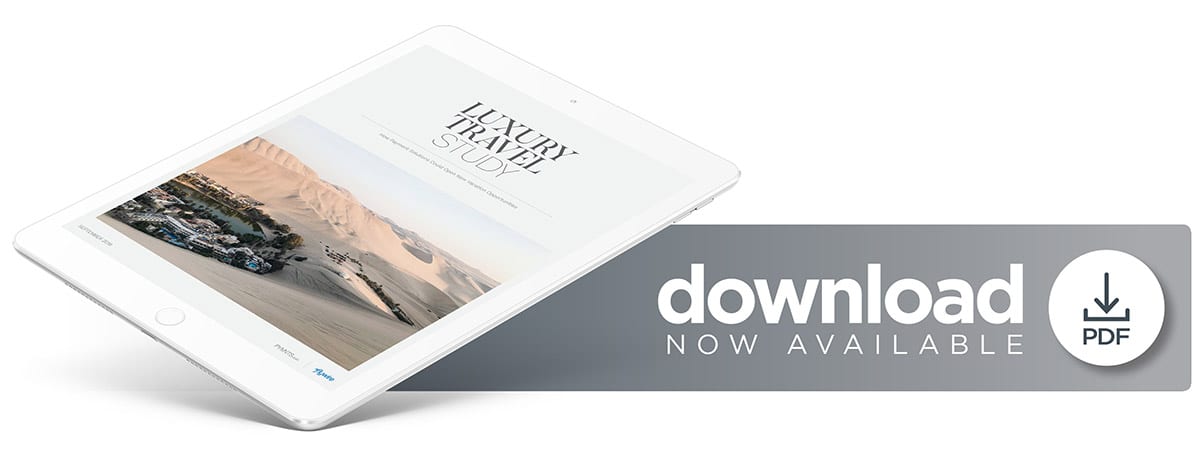Deep Dive: Frequent Versus Infrequent Travelers

Vacation payment plans could open doors for travelers, especially those concerned about how much their trips will ultimately cost. Such plans’ availability could even help transform these consumers into frequent travelers who take more than one adventure travel vacation per year.
PYMNTS’ research shows that 53.9 percent of respondents who report having taken and paid for an adventure travel vacation in the past year say they took only one such trip during that period. Some travelers take more trips than others, however, and the remaining 46.1 percent of consumers who took and paid for adventure travel in the past year went on at least two such trips. Who are these frequent travelers?
Of the 92.1 million people who took luxury vacations within the past year, 51.4 million reported more than one, fitting the “frequent traveler” description. PYMNTS also estimates that 54 million people who did not take luxury vacations last year are planning to do so next year — nearly 36 percent of those planning to travel in the future fall into the frequent traveler bracket.
Adventure travelers are less likely to fall into the frequent traveler category, according to our findings, as only 46.1 percent of them reported taking more than one such vacation last year. Other luxury travelers were much more likely to vacation frequently, with 54.4 percent taking more than one vacation during the same time frame.
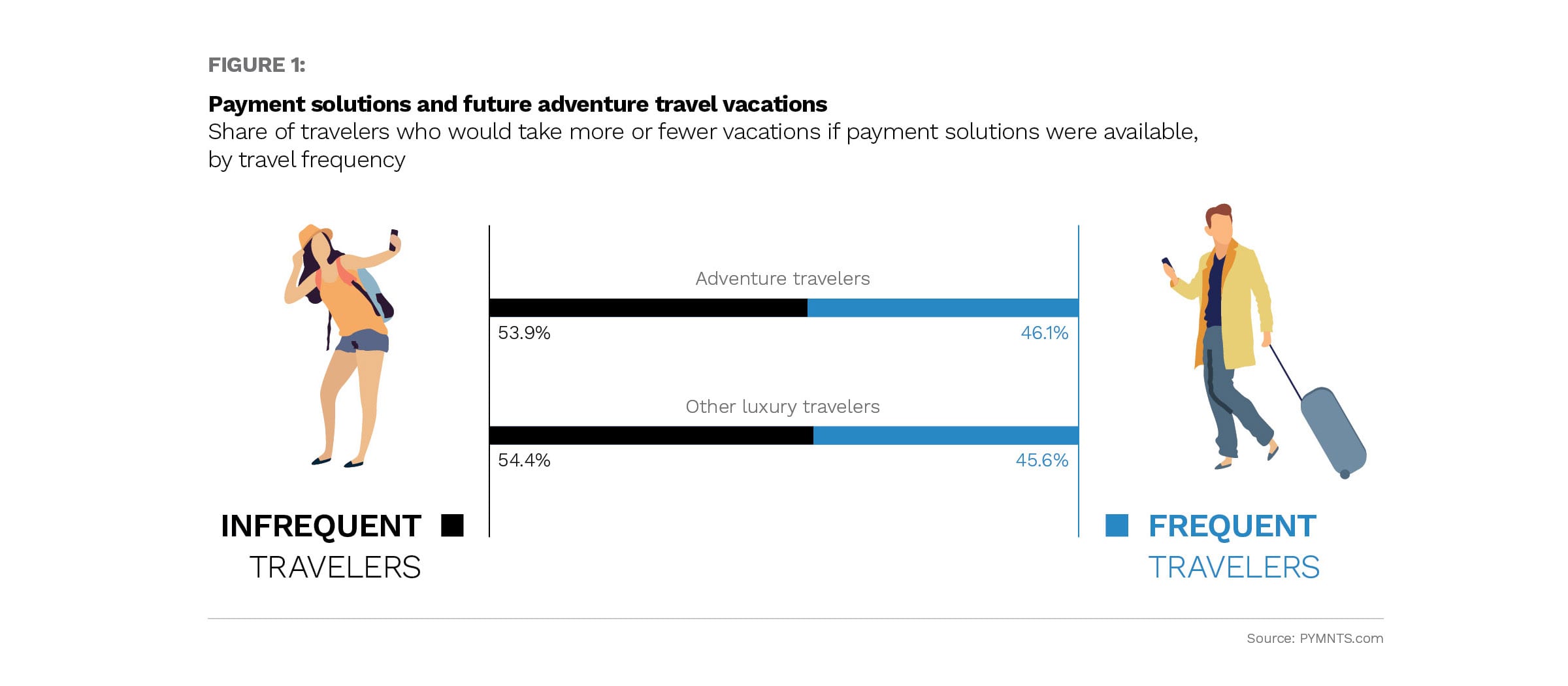
Frequent luxury travelers tend to be younger than other respondents, with 52.1 percent of the former falling into the millennial age group and 35.5 percent being bridge millennials. Millennials are also most likely to fit into the infrequent traveler profile, though to a lesser extent. This group makes up 36.2 percent of infrequent travelers, followed by Gen X travelers at 32.3 percent.
Those who plan to travel next year are more likely to fall into older age brackets such as baby boomers and seniors. The highest share can be found in Gen X (33.9 percent), followed by millennials (30.8 percent) and baby boomers (27.2 percent).
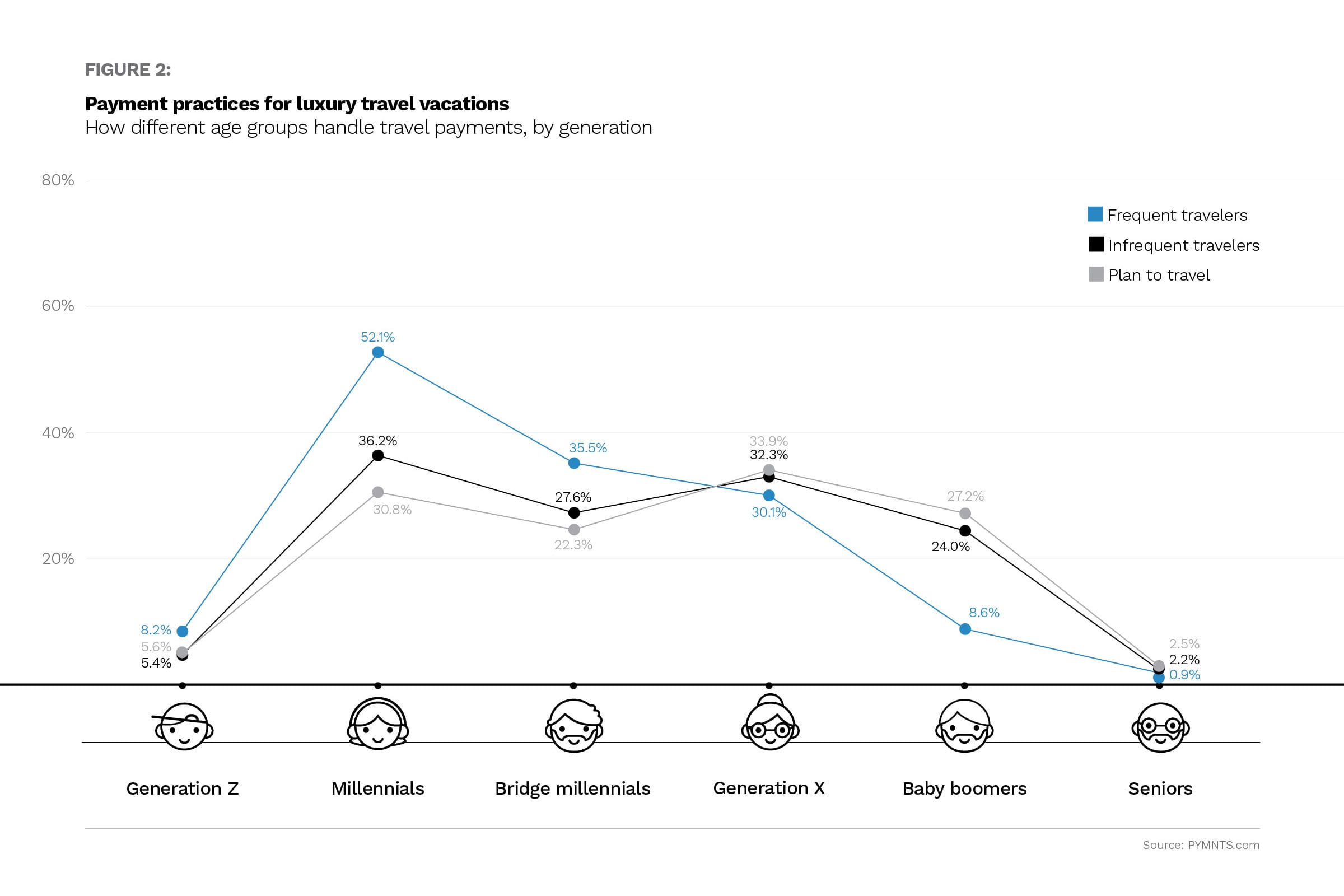 Frequent luxury travelers are more likely to be employed than infrequent travelers, but they are also likely to earn less. The former is slightly likelier to earn less than $50,000 and between $50,000 and $100,000 compared to infrequent travelers, for example. It also appears that frequent luxury travelers are slightly more family-oriented, with the highest share (40 percent) indicating they are traveling as couples with children.
Frequent luxury travelers are more likely to be employed than infrequent travelers, but they are also likely to earn less. The former is slightly likelier to earn less than $50,000 and between $50,000 and $100,000 compared to infrequent travelers, for example. It also appears that frequent luxury travelers are slightly more family-oriented, with the highest share (40 percent) indicating they are traveling as couples with children.
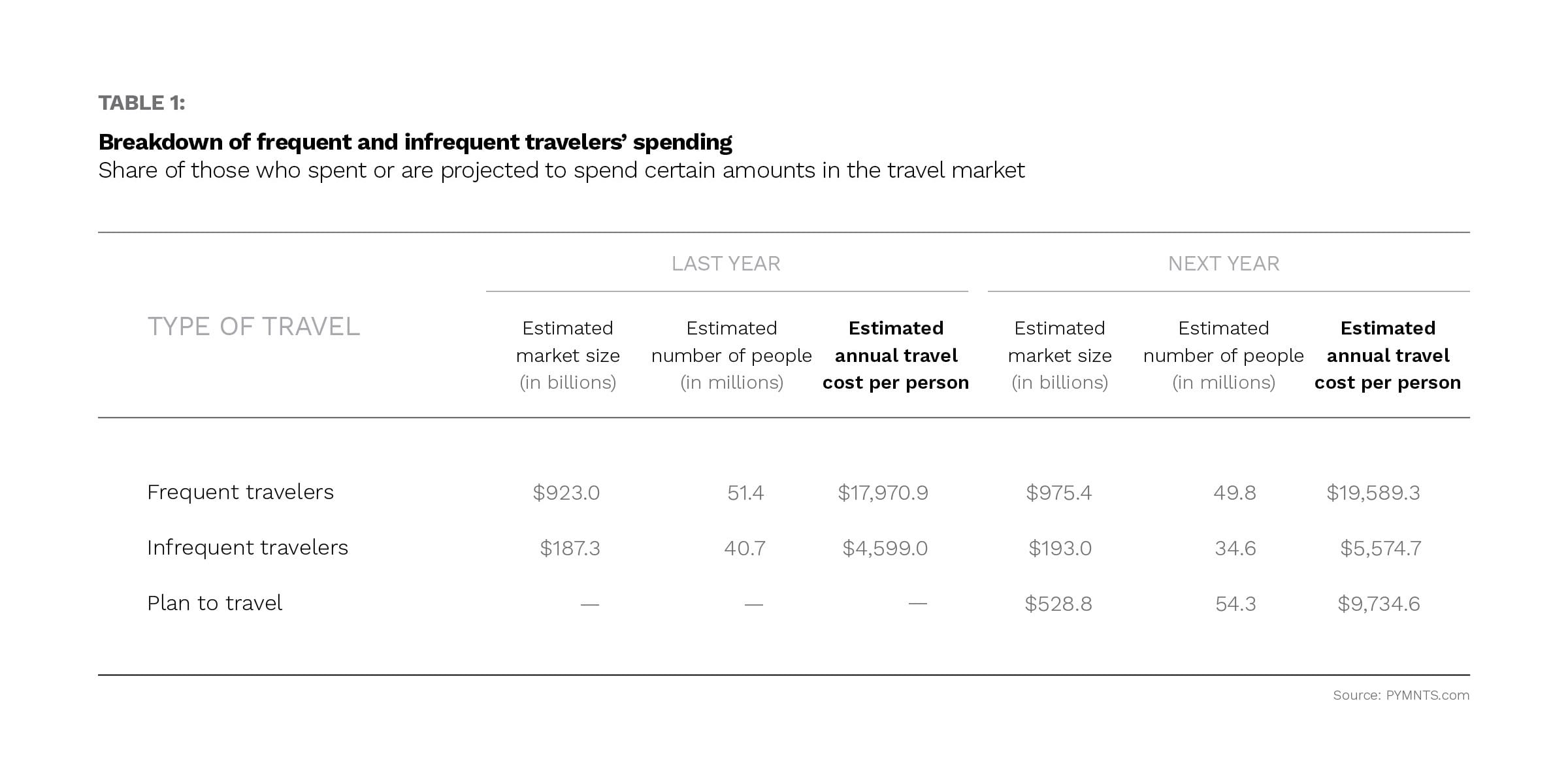 Frequent travelers’ priorities differ significantly from those of their infrequent counterparts in terms of preferred adventure travel types, too. The former is more likely to pursue sightseeing activities and casino trips compared to those who travel infrequently. Many of the latter are instead more likely to prefer beach outings, mountain adventures, hiking, camping and cruises.
Frequent travelers’ priorities differ significantly from those of their infrequent counterparts in terms of preferred adventure travel types, too. The former is more likely to pursue sightseeing activities and casino trips compared to those who travel infrequently. Many of the latter are instead more likely to prefer beach outings, mountain adventures, hiking, camping and cruises.
It is perhaps unsurprising that frequent travelers contribute more to the adventure vacation market than their infrequent counterparts. The former spent $923 billion on trips and represented 83.1 percent of the market last year. Frequent vacationers also spent considerably more per person than infrequent ones, with an average cost of $17,970.9 per individual for those in the former group compared to $4,599 for those in the latter. The estimated cost per person among those who plan to travel next year is $5,575.
Frequent travelers are more likely to use the money they have in their bank accounts rather than saving up funds when paying for their vacations. They are also more likely than infrequent travelers to find it “somewhat” or “very” easy to pay for vacations.
Frequent travelers do not appear to have trouble paying for vacations, but they are considerably more interested in innovative payment solutions than their counterparts. Our analysis finds 73.9 percent of those who travel frequently say they are either “somewhat” or “very or extremely” interested in innovative payment solutions. On the other hand, just 68 percent of those who plan to travel and 62.6 percent of infrequent travelers say the same.
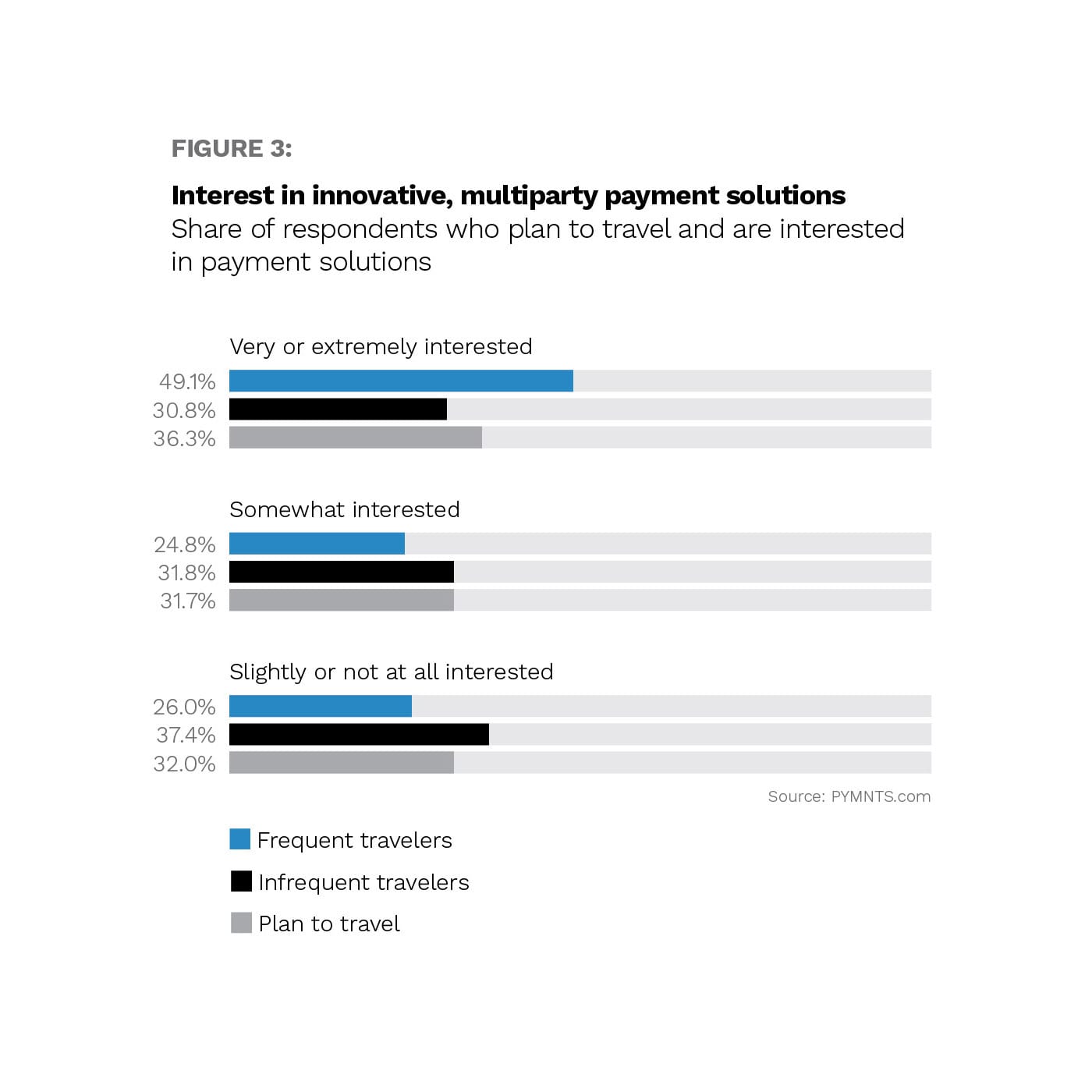
In other words, while they do not find it difficult to save money or make payments, frequent travelers would welcome solutions that make their vacations more seamless. Catering to this group could help such solutions see significant adoption, especially considering that these frequent vacationers recently accounted for more than 75 percent of the adventure travel market.
Most frequent travelers indicate they would take even more vacations if innovative payment solutions were available, with 66.4 percent saying they would take either “somewhat” or “many more” trips if they had access to options like payment plans. Infrequent travelers and those planning to travel next year would take more trips, as well, though to a lesser extent. Frequent travelers are also more likely than infrequent ones to vacation with others, meaning they would value solutions that enable payments to be split between travel companions.
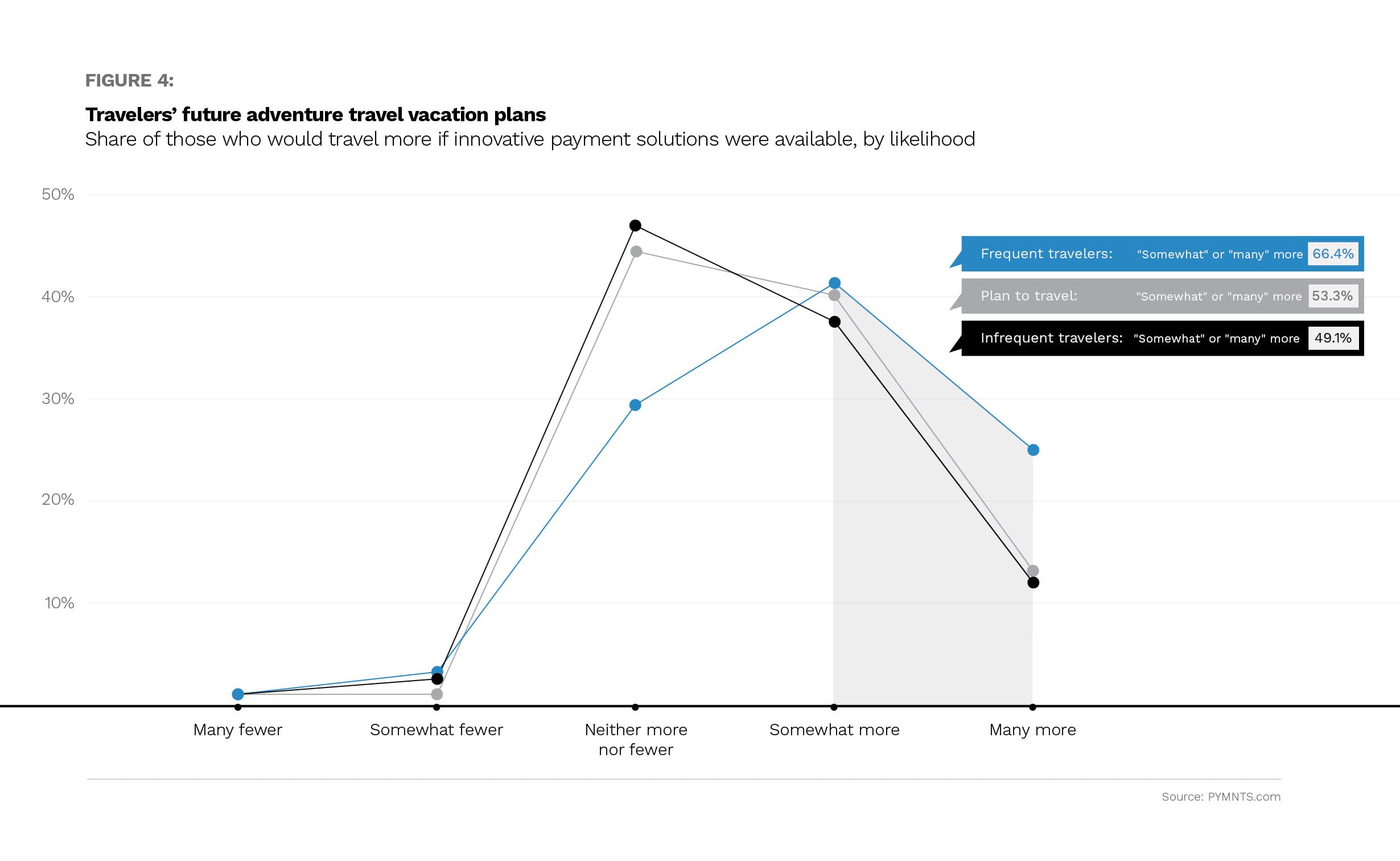 The luxury travel market is thriving, in large part because of the ability of frequent travelers to pursue their vacation plans. Providing innovative payment solutions that enable travelers to split the cost of vacations among themselves, pay at their convenience and utilize both desktop- and mobile-friendly interfaces could further enhance the travel experience for those in this group, especially when their travels include additional people. Having these payment tools available could help infrequent travelers and those who have delayed their vacation plans to travel more easily.
The luxury travel market is thriving, in large part because of the ability of frequent travelers to pursue their vacation plans. Providing innovative payment solutions that enable travelers to split the cost of vacations among themselves, pay at their convenience and utilize both desktop- and mobile-friendly interfaces could further enhance the travel experience for those in this group, especially when their travels include additional people. Having these payment tools available could help infrequent travelers and those who have delayed their vacation plans to travel more easily.
